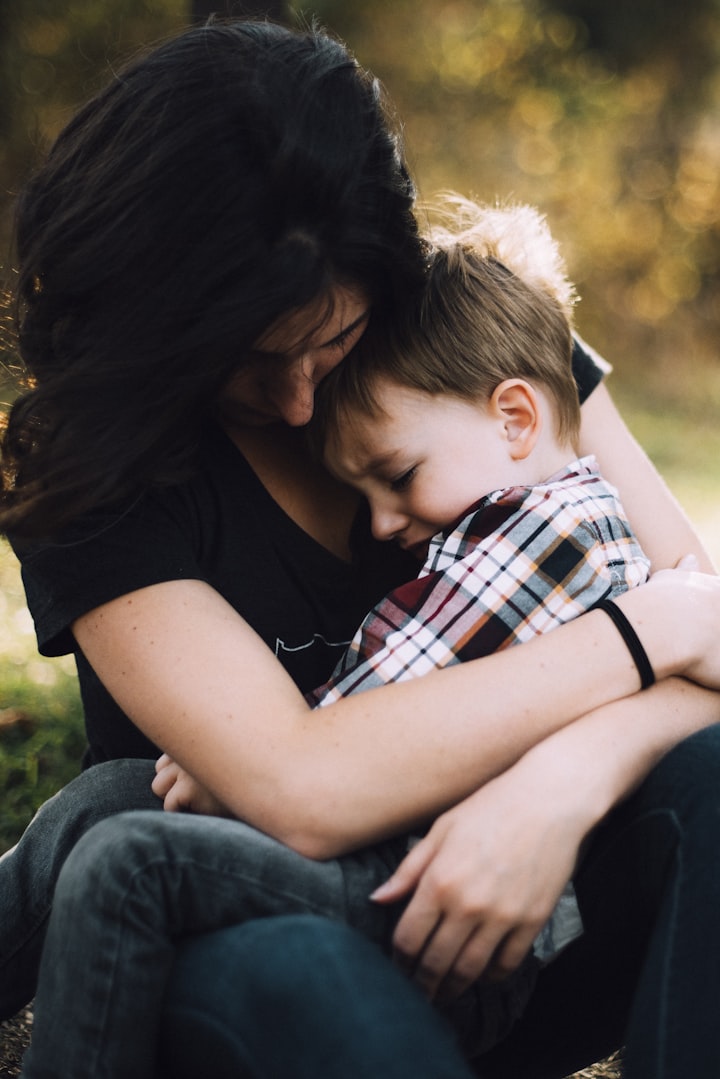Passionate Rhythms and Taboos: Exploring Fascinating Sexual Customs Across Cultures
Unveiling the Intricacies of Diverse Sexual Customs

Passionate Rhythms and Taboos: Exploring Fascinating Sexual Customs Across Cultures
Throughout history, diverse cultures worldwide have developed intricate and sometimes perplexing sexual rituals that play essential roles in their societies. These practices, ranging from Rites of Passage to matrimonial ceremonies, are often deeply rooted in traditions, beliefs, or the need to preserve a particular social order. While some of these customs might seem bizarre or even disturbing to outsiders, they hold deep significance within their respective cultures. As we journey across continents and eras, we will delve into 15 such peculiar sexual customs, shedding light on their origins, intricacies, and the roles they play in their communities.
The Zambian Tribe of Papua New Guinea
Papua New Guinea, with its rugged terrains and isolated communities, has always been a crucible for unique cultural practices among its diverse indigenous peoples. The Sambian tribe stands out for its distinctive Rites of Passage, which involve rigorous sexual practices from the tender age of seven. Boys of the Sambian tribe are separated from the females of their community, believed to strengthen them into strong, fierce warriors. The process of transforming a boy into a man in Sambian culture is complex, multifaceted, and deeply rooted in their perception of masculinity and the fluid nature of life forces.
One primary aspect of this ritual involves the ingestion of older men's semen by the younger initiates. In the eyes of the Sambians, semen is considered a potent life force required for a boy's transition into adulthood. Consuming this life force is believed to be essential for their growth into mature, strong adults. This practice might seem taboo to outsiders, but for the Sambian boys, it is a crucial step in their journey to manhood.
The Trobrianders of Papua New Guinea
The Trobriand Islands, an archipelago in eastern Papua New Guinea, house the Trobrianders, an ethnic group with distinct customs surrounding adolescence and sexuality. Unlike many societies worldwide where premarital relations are discouraged, the Trobrianders approach adolescence with a different perspective. It is a time for exploration, understanding, and learning the art of love and seduction.
Casual relationships, occurring in secretive spots known as bushes, are a norm and a rite of passage for post-puberty Trobrianders. These relationships are considered crucial learning experiences, preparing youngsters for their adult relationships and marital duties. Yam houses, vital structures in Trobriand society, serve as rendezvous points for young lovers.
Nepal's Naimba Community
The Ninbach community, nestled within Nepal's scenic valleys, practices polyandry—a marital arrangement where one woman is married to multiple brothers. This custom, quite rare in a world dominated by monogamous and polygynous marital practices, carries profound societal implications. The challenging terrains with limited arable land necessitated undivided land and property, making polyandry a solution by having one woman marry all brothers in a family.
Beyond the economic rationale, polyandry has significant social underpinnings. It fosters unity and mutual responsibility among the brothers, ensuring that familial ties remain strong and cohesive. From the woman's perspective, being in a polyandrous marriage brings both challenges and securities. She benefits from collective protection, care, and provision from all her husbands.
Ancient Egyptian Pharaohs
The Divine status of ancient Egyptian pharaohs demanded the preservation of their sacred bloodline. To safeguard this divine connection and ensure its continuation, pharaohs often married within their family, primarily siblings or close relatives. Queen Cleopatra was herself a product of generational intermarriage. The complex burial rituals of the pharaohs, which included mummification, were designed to ensure safe passage to the afterlife.
The Wodaabe Tribe of Niger
Deep within the Sahel desert of Niger, the Wodaabe tribe holds the Gerewol festival, where roles reverse, and men become the center of attraction in colorful beauty contests. Young Wodaabe men adorn elaborate makeup and costumes, vying for the attention and admiration of the tribe's women. The event goes beyond aesthetics, showcasing stamina, endurance, and potential as suitors.
Ancient Greece
Pederasty in ancient Greece was a unique bond between an adult male and an adolescent boy, intertwined with mentorship, coming-of-age rituals, and societal norms. The relationship consisted of an erastes (an adult male lover) and an eromenos (beloved youth). The erastes would take on the role of a mentor, guiding the young boy in matters of politics, warfare, and philosophy.
The Dani Tribe of Indonesia
The Dani tribe practices finger-cutting, a ritual associated with grief and lost love. When a member of the Dani tribe dies, the women closely related to the deceased amputate a segment of their fingers. The severed finger segment serves as a lifelong reminder of their lost loved one, acting as a poignant testament to the depth of their loss.
The Himba Tribe of Namibia
The Himba tribe's unique marriage rituals in Namibia are deeply symbolic and play a pivotal role in binding the community together. Preparation for marriage includes discussions and agreements on dowries, symbolizing a bride's worth and wealth distribution within the community. The rituals leading up to the marriage are vibrant, and the bride-to-be anoints herself with red ocher mixture, symbolizing earth, life, and the bloodline of the Himba people.
The Maasai of Kenya and Tanzania
The circumcision ceremony is a crucial rite of passage for young Maasai boys, marking their transition from boyhood to warrior status. Girls' circumcision marks their passage into womanhood, preparing them for marriage and motherhood.
The Sateré-Mawé Tribe of Brazil
The Sateré-Mawé tribe practices the bullet ant ritual, an excruciatingly painful initiation rite that signifies a young boy's transition to manhood. Bullet ants, named for their painful sting, are woven into gloves, and the initiate must wear them, enduring the intense pain as a test of courage and resilience.
The Mangaya of the Cook Islands
The Mangaya community in the Cook Islands emphasizes sexual education, providing detailed instruction about intimacy, emotional aspects, and ethics from an early age. Both boys and girls receive guidance from elders to ensure healthier relationships, stronger community bonds, and a harmonious society.
Ancient Rome
The Bacchanalia, dedicated to the god of wine, fertility, and merriment, blurred the lines between pleasure, excess, and spiritual devotion. The ritual involved ecstatic dances, orgiastic revelries, and communion with Bacchus, allowing worshipers to experience divine frenzy.
The Krakai People of Cambodia
The Declaration ceremony among the Krakai people symbolizes a girl's transition into womanhood. An older, respected man from the community, known as the deflorator, is chosen to guide the young girl through her first sexual experience, ensuring she understands respect, consent, and the intricacies of intimacy.
The Bari Tribe of Venezuela
The Bari tribe's partable paternity belief posits that a child can have multiple biological fathers. Women may have multiple partners during pregnancy, contributing spiritually and physically to the forming child. This belief fosters a sense of communal guardianship over children and strengthens social bonds.
The Sworn Virgins of Albania
The sworn virgins of Albania assume male roles and privileges upon taking a solemn oath of chastity, providing an alternative path for women in a deeply patriarchal society. This decision is often a pragmatic response to specific societal and familial challenges, granting women societal stature and independence in exchange for the vow of eternal chastity.
Conclusion
The diversity of sexual customs and rituals across cultures offers a rich tapestry of human experiences and beliefs. While these practices might appear peculiar or even shocking to outsiders, they hold deep cultural, spiritual, and social significance within their respective communities. Understanding and respecting these customs can offer valuable insights into the complexity of human relationships, societal structures, and the unique ways in which cultures adapt to their environments. As we explore these traditions, we gain a greater appreciation for the vastness and intricacies of human cultural diversity.
Like what you read? Send me a gift below to help contribute to more amazing content like this. Don't forget to subscribe. THANK YOU FOR READING
Like & Share the link to social media
About the Creator
Dennis Thomas IV
"Meet Dennis Thomas IV, the Quirky Innovator 🚀🤓 Armed with a brilliant mind and a penchant for humor, Dennis concocts dazzling solutions that delight. Get ready to explore new frontiers of engagement with Dennis's unique flair!"






Comments
There are no comments for this story
Be the first to respond and start the conversation.